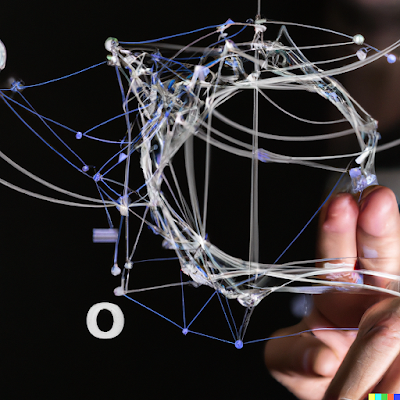Facebook has announced plans to create a metaverse, or a
virtual shared space, as part of its vision for the future of the internet. The
company has stated that it plans to build the metaverse on top of existing
technologies such as virtual reality and augmented reality, and that it will be
accessible through its platforms, including Facebook, Instagram, and WhatsApp.
According to Facebook CEO Mark Zuckerberg, the metaverse
will be a "digital living space" that will enable users to connect,
interact, and create in immersive and interactive virtual environments. The
company has said that it plans to leverage its existing social networking and
communication platforms to create a more seamless and immersive online
experience.
Some potential applications of the Facebook metaverse
include:
- Virtual
reality-based social networking and communication
- Virtual
reality-based gaming and entertainment
- Virtual
reality-based education and training
- Virtual
reality-based work and collaboration
Facebook has not yet provided many details about the
specific features and capabilities of its metaverse, and it is still in the
early stages of development. However, the company has stated that it plans to
roll out the metaverse gradually, starting with the release of virtual reality
and augmented reality products and experiences. It is expected that the
Facebook metaverse will be an important component of Web 3.0, and will have a
significant impact on the way we access and use information on the web.
Facebook has not yet provided many details about the
specific features and capabilities of its metaverse, as it is still in the
early stages of development. However, according to CEO Mark Zuckerberg, the
Facebook metaverse will be built on top of existing technologies such as
virtual reality and augmented reality, and will be accessible through the
company's platforms, including Facebook, Instagram, and WhatsApp.
Some core things that might be included in the Facebook
metaverse could include:
- Virtual
reality-based social networking and communication: The Facebook metaverse
could enable virtual reality-based social networking and communication,
allowing users to connect and interact with each other in immersive and
interactive virtual environments. This could include features such as
virtual reality-based chat rooms and forums, or virtual reality-based
events and gatherings.
- Virtual
reality-based gaming and entertainment: The Facebook metaverse could
enable virtual reality-based gaming and entertainment, allowing users to
experience immersive and interactive virtual worlds and experiences. This
could include features such as virtual reality-based games, or virtual
reality-based concerts and other events.
- Virtual
reality-based education and training: The Facebook metaverse could enable
virtual reality-based education and training, allowing users to learn and
practice skills in immersive and interactive virtual environments. This
could include features such as virtual reality-based classrooms, or
virtual reality-based training simulations.
- Virtual
reality-based work and collaboration: The Facebook metaverse could enable
virtual reality-based work and collaboration,
As the Facebook metaverse is still in the early stages of
development, few details have been made public about its specific features and
capabilities. However, according to CEO Mark Zuckerberg, the Facebook metaverse
will be built on top of existing technologies such as virtual reality and
augmented reality, and will be accessible through the company's platforms,
including Facebook, Instagram, and WhatsApp.
It is likely that the Facebook metaverse will include a wide
range of features and capabilities to enable virtual reality-based social
networking, gaming, education, and work. Some possible additional details that
might be included in the Facebook metaverse could include:
- Virtual
reality-based avatars: The Facebook metaverse could include virtual
reality-based avatars that allow users to represent themselves and
interact with others in virtual environments. These avatars could include
customizable appearance and personalization options, and could be used to
communicate and express oneself in the metaverse.
- Virtual
reality-based environments: The Facebook metaverse could include virtual
reality-based environments that users can explore and interact with. These
environments could include a wide range of locations and settings, such as
virtual cities, parks, and other public spaces.
- Virtual
reality-based activities and events: The Facebook metaverse could include
virtual reality-based activities and events that users can participate in.
These could include virtual reality-based games, concerts, sports events,
and other activities.
- Virtual
reality-based tools and resources: The Facebook metaverse could include
virtual reality-based tools and resources that users can use to create and
share content in the metaverse. These could include virtual reality-based
editing and creation tools, or virtual reality-based libraries and
resources.
Overall, it is expected that the Facebook metaverse will be
a rich and immersive online environment that will enable a wide range of
virtual reality-based experiences and activities. However, as the metaverse is
still in the early stages of development, it is difficult to predict exactly
what features and capabilities it will include.
 |
Metaverse |














